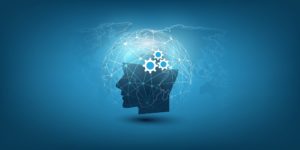
What’s the Difference Between AI, ML, Deep Learning, and Active Learning?

(Jozsef Bagota/Shutterstock)
Today, the terms artificial intelligence (AI) and machine learning (ML) are often used interchangeably. While the terms are related, they mean different things. We map out how they all relate to one another, so your team can find the best candidates, best approaches and best frameworks as you embark upon your AI journey.
AI refers to the concept of machines mimicking human cognition. To reference artificial intelligence is to allude to machines performing tasks that only seemed plausible with human thinking and logic.
In the real world, one of the most ubiquitous forms of AI might manifest themselves in the form of conversational AI. Conversation AI may include multimodal inputs (e.g. voice, facial recognition) with multimodal outputs (e.g image, synthesized voice). All of these modalities can be considered part of AI, as well as the integration of these modalities.
You may already be familiar with some of these modalities. Starbucks enhanced its mobile app by enabling ordering ahead via voice commands, and Staples’ Easy System allows customers to order with voice commands.
Machine Learning Algorithms Create AI
Machine learning, deep learning, and active learning, on the other hand, are approaches used to implement AI. If AI is when a computer can carry out a set of tasks based on instruction, ML is a machine’s ability to ingest, parse, and learn from that data itself in order to become more accurate or precise about accomplishing that task.
While other statistical methods for learning exist, through recent ML advancements, practitioners have revived the concept of neural networks, which are a series of algorithms that act—as one might assume—like the human brain.
ML is prevalent anywhere AI exists, but it has some specific use cases with which we may already be familiar. Companies like Microsoft leverage predictive machine learning models to make better financial forecasts. These models make predictions on financial entities by learning from historical trends and generating forecasts of a stock’s movement.
Deep Learning, Weights, and Neural Network Activity
As machine learning has advanced, researchers and programmers have dived deeper into what algorithms are able to accomplish. A layer beyond machine learning, we find deep learning. There are a few, similar definitions of deep learning. The simplest definition for deep learning is that it is “a set of algorithms in machine learning that attempt to learn in multiple levels,” where the lower-level concepts help define different higher-level concepts.
Within a neural network, each processor or “neuron,” is typically activated through sensing something about its environment, from a previously activated neuron, or by triggering an event to impact its environment. The goal of these activations is to make the network—which is a group of ML algorithms—achieve a certain outcome. Deep learning is about “accurately assigning credit across many such stages” of activation.
Google Brain may be the most prominent example of deep learning in action. Researchers presented, without specifying any parameters for cat identification, Google Brain with 10 million images of cats taken from YouTube videos. The network successfully identified cat images without using labeled data.
Active Learning Chooses Its Own Data
Most ML algorithms require annotated text, images, speech, audio or video data. But, with the right resources and right amount of data, practitioners can leverage active learning. Active learning is the philosophy that “a machine learning algorithm can achieve greater accuracy with fewer training labels if it is allowed to choose the data from which it learns.” In order to choose the data from which it learns, an active learning-based AI can query humans in order to obtain more data.
Active learning in the real world is best thought of as a method of training ML algorithms, which means the technique may or may not be used in instances where ML drives artificial intelligence. In practice, the idea behind active learning is that data scientists can use poorly trained AI to help identify—through a Query Strategy, as outlined above—which pieces of data should be used to train a better version of that AI.
Human labelers are required for any sort of ML, but with Active Learning their work is significantly reduced by the machine selecting the most relevant data.
Differences Abound Despite Inextricable Links
Deep learning is a more advanced form of machine learning, which is used to create artificial intelligence. Active learning leverages readily available, and often imperfect, AI to actively select new data that it believes would be most beneficial when developing the next, improved version of the AI. Active Learning therefore can significantly reduce the amount of data required to develop a performant AI system because it only learns from the most relevant data. All of these terms are interconnected, but each refers to a specific component of creating AI. With the right understanding of what each of these phrases entail, you can get off on the right foot creating your own AI.
About the author: Kiran Vajapey is a senior HCI developer at Figure Eight, a provider of high-quality data annotation solutions. Kiran focuses on designing interfaces that will advance human-in-the-loop technologies. Over his career, Kiran has worked on products in a number of fields including finance, computer vision, and natural language processing among others. In his free time Kiran dabbles in video production.
Related Items:
No Time Like the Present for AI: The Journey to a Successful Deployment
The ‘Big Bang’ of Data Science and ML Tools
Machine Learning, Deep Learning, and AI: What’s the Difference?




























